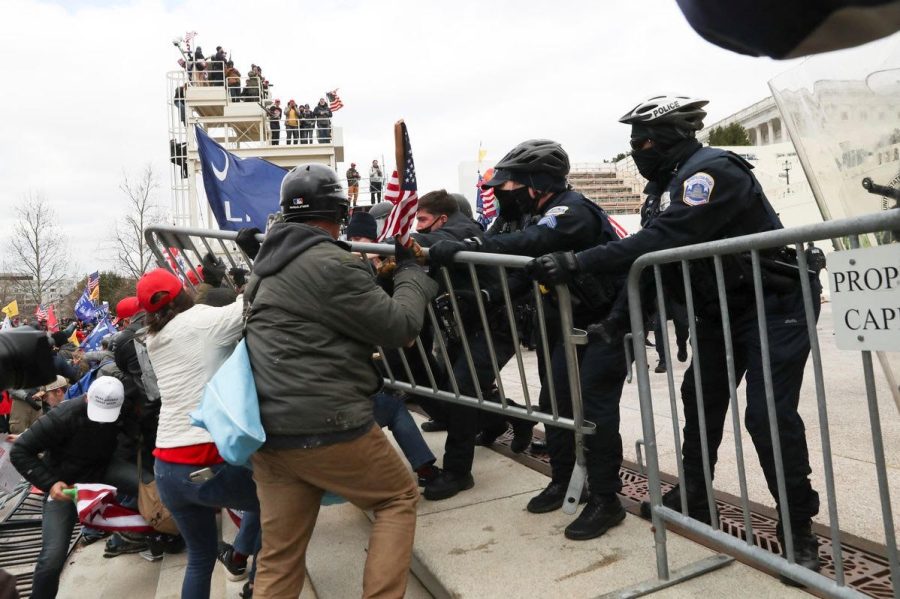Violence in Congress: When Will It End?
November 17, 2022
On October 28, 2022, around 2 a.m., a 42-year-old man named David DePape broke into Nancy Pelosi’s (Speaker of the House) and her husband, Paul Pelosi’s house in San Francisco. He brought with him two hammers, zip ties, a roll of tape, a rope, and two pairs of gloves. Nancy Pelosi was away in Washington DC at the time of the break-in, and DePape only encountered Paul Pelosi. He was able to call 911, and when police officers arrived, DePape struck Pelosi in the head with a hammer. He was hospitalized for a fractured skull and several arm injuries, and was operated upon for these injuries.
When DePape talked to police after the attack, he stated that he came to “have a little chat with his wife [Nancy Pelosi]” because he was “sick of the insane f—— level of lies coming out of Washington DC.” He allegedly planned to take Mrs. Pelosi hostage and “break her kneecaps” to show other members of Congress that there are “consequences for their actions.”
This isn’t the first threat or act of violence against Congress members. In fact, actions like this are disturbingly common against lawmakers like Pelosi. Congress members are regularly threatened, harassed, assaulted, and attacked. Threats and attacks like these intensify around election times, so this attack happening before the 2022 midterm elections was not unprecedented.
Both Democratic and Republican party members are affected by this issue, but in the case of Nancy and Paul Pelosi, it was a far-right leaning man taking revenge against a representative of the Democratic party.
Serious threats like these are enough of a pressing issue for congresspeople to use official or campaign funds for their own protection. An analysis by The Times of campaign finance and congressional data shows that members of Congress spent over $6 million on security since the beginning of 2021.
Data from this analysis shows that congresspeople of color are more profoundly affected, as they are spending an average of $17,500 more on security than their white colleagues. Democrats also spend around $9,000 more on security than Republicans, suggesting that they feel more directly threatened.
Some of the most controversial figures in Congress are targeted the most. For example, Representative Alexandria Ocasio-Cortez, a vocal advocate for liberal causes, seeks protection from a 24-hour security detail because of a consistent pattern of threats, confrontations, and harassments she faces regularly.
Additionally, Representative Pramila Jayapal of Washington State faces the same issue. A man repeatedly showed up armed with a .40 caliber semiautomatic pistol at Jayapal’s residence threatening her while shouting profanities and racist exclamations. Rep. Jayapal is the first Indian-American woman to serve in the House of Representatives, and to do that she is forced to withstand armed men screaming at her to kill herself and to go back to her country. Female women of color in Congress are faced with vulgar, racist, and sexist comments regularly.
Ultimately, violence against Congress members is intense, frequent, and targeted, and it leads to real harm against lawmakers and their loved ones, like in the case of Paul Pelosi’s hospitalization. Desperate minorities in Congress are forced to protect themselves using campaign funds, because capitol police can only address the threats they deem serious among the thousands of incidents. Members of Congress shouldn’t have to fear for their lives going about their days, and politics shouldn’t be a deadly profession for anyone.

